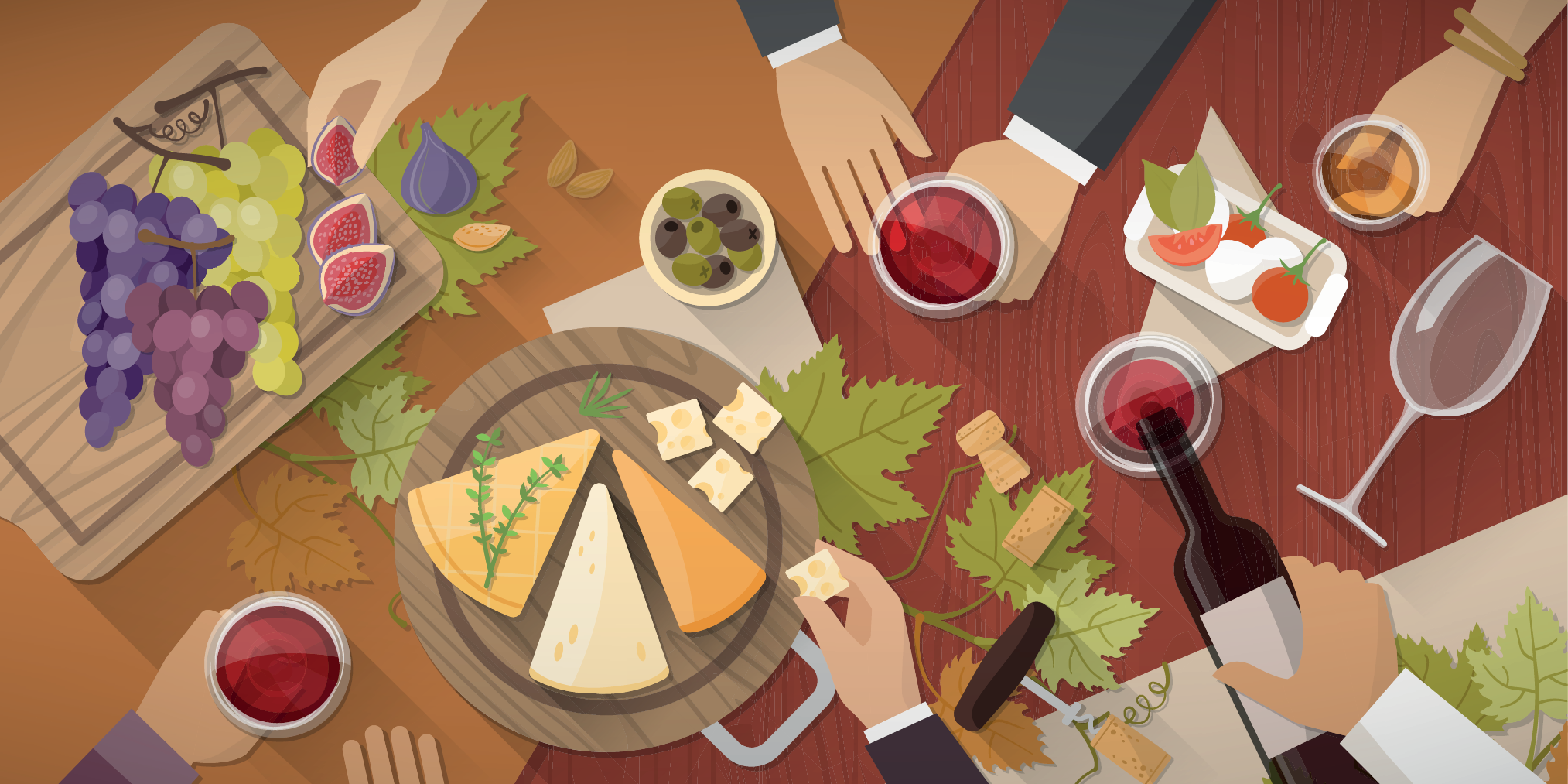Even if you have years of experience with wine, it’s always good to review the basics. Here, we offer some of the essential “how-tos” of ordering, opening, serving and enjoying your wine of choice.
 How to Open a Bottle of Champagne
How to Open a Bottle of Champagne
Remove the foil wrap and untwist the wire cake, keeping your hand on the cork. Hold the cork in a kitchen towel and support the base of the bottle against your mid-section. Twist the cork while holding it and wiggle it out of the bottle, opening it gently.
If you want to make a splash, you could pop the cork dramatically by shaking the bottle vigorously, then use your thumb to push the cork up from the bottom. DO NOT point the bottle at any friends or valued objects.
How to Chill Wine
Contrary to popular belief that red wines should be served at room temperature, they actually taste better when chilled. As a rule of thumb, red wines should be served at an optimal 60- to 68-degree temperature, while white and rosé wines are best served at a temperature between 49 and 55 degrees. To cool reds, refrigerate them for approximately one hour before serving.
How to Decant Wine
You decant wines to aerate them, or add air. This is especially beneficial for high-tannin red wines as it will smooth out the flavor. If you have the time, decant your red wine up to two hours in advance. To speed up the aerating process, decant from container to container several times to increase the air/wine ratio. To aerate just one serving, pour your reds through a Vinturi Wine Aerator directly into your glass.
How to Keep Wine Fresh
According to the pros at Wine Enthusiast, the best way to preserve unused wine is to replace the cork properly, inserting the stained side into the bottle. Refrigerate your wine; the cooler temperature will retard exposed wine from breaking down. Plan to drink it within a day or two.
Air pumps and seals are also available, like the Vacu Vin that sucks the air out of the bottle, or tasteless, odorless gas like Private Preserve that can be sprayed into the bottle to replace the air. Or invest in a Corvin™ wine extractor tool which allows you to enjoy your wine by the glass without pulling the cork.
How to Taste a Wine
To properly taste a wine, first look at its color, then its opacity. Tip the glass to see how the wine thins out near the rim; a thin wine will look pale and watery near the edge. Swirl the glass by its base on a flat surface to release the aroma compounds, and look for “legs” that indicate more alcohol and glycerin content, and a bigger taste and greater mouth-feel.
Hover over the glass to sniff the wine, looking for recognizable aromas like floral, herb, fruity or earthy tones and to detect faults. Taste the wine, noting texture, acidity and tannins, mouth-feel or fullness, and the length of taste from the beginning to the finish. Experience how the flavors can change.
How to Reco gnize Bad Wine
gnize Bad Wine
If you experienced a wine that tasted like vinegar, you received a bottle that spoiled. Like many products, wine has a shelf life, especially when opened. Indications of a wine that’s gone bad include a cloudy appearance, a film in the bottle or around the cork, a color change or “browning” effect, or tiny bubbles. Using your nose, you can detect a sharp, sour or medicinal smell. If the wine makes it past these senses but tasted vinegary or gives a burning sensation to the nostrils, toss it out.
How to Expectorate Wine
When you attend a tasting serving dozens of wines, you cannot be expected to swallow them all and still make it home. Believe it or not, the polite thing to do is spit it out. Some sommeliers recommend carrying a paper cup for spitting, and for discretely expectorating your wine. Use a bit of force when spitting so the wine does not dribble down your chin.
 How to Handle Corkage Fees
How to Handle Corkage Fees
While some restaurants allow diners to bring their own bottle of wine to the meal, many charge corkage fees, or a surcharge for opening and serving the wine. To avoid embarrassment, call the restaurant ahead of time, or at the time of reservation ask about their corkage policy and fees. Expect that fees could run $20 or more per bottle. Bring your bottle in a nice wine carrier, not a paper bag.
How to Impress a Girl
To impress a girl (or a guy), learn the basics of wine, like the various varietals and how to pronounce them. This way you will seem knowledgeable when ordering in a restaurant. If you don’t know how to order or want to avoid revealing the price to your companion, simply point to the wine you want. The sommelier will understand. When the wine arrives, don’t sniff the cork. Swirl your glass to aerate the wine, and take a sip. Look at your server and confidently say, “That will be fine.”
Most of all, wine is to be enjoyed, whether in solitary or amidst the company of others. In the words of Napoleon Bonaparte, “Wine is inspiring and adds greatly to the joy of living.”






